An invasive species is a plant or animal that is non-native to a region that causes harm to the environment, human health, or the economy. They can come from all over the world. Threats from these species increase as international trade increases. While it may not seem like a non-native species could cause so much damage, they are one of this country’s most significant threats to biodiversity. Discover 11 invasive species in New York. Find out how they were introduced to the state and what dangers they pose.

1. Chinese Mitten Crab
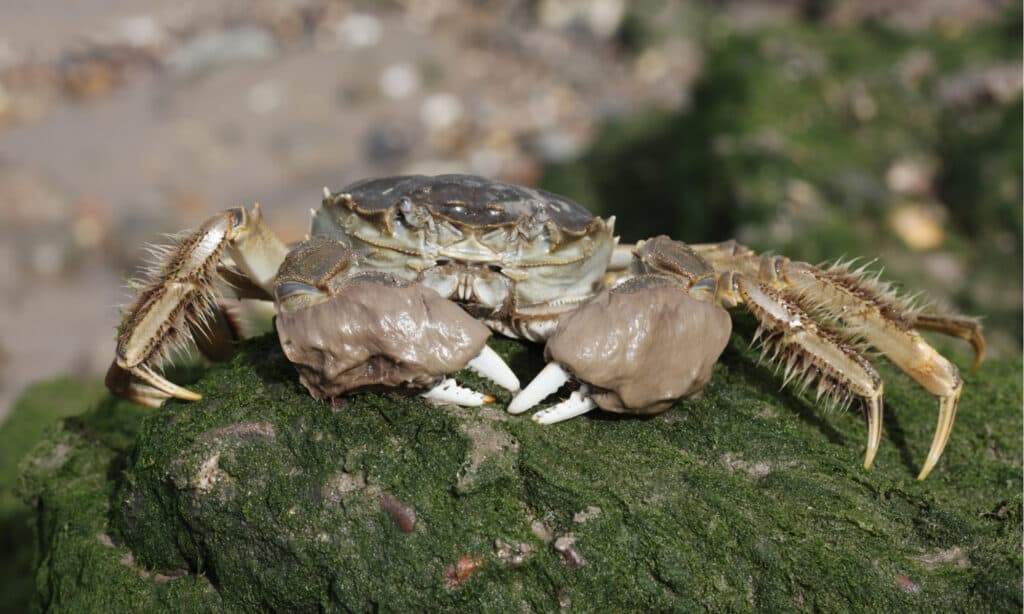
The Chinese mitten crab is an invader of the Hudson River.
©Erni/Shutterstock.com
The Chinese mitten crab is native to East Asia and is a freshwater invader of the Hudson River. These crabs feature white tups and hair, and they feature eight, pointed walking legs. They can live in both freshwater and saltwater and have been found in the Hudson since 2007. However, their numbers have dropped significantly. Chinese mitten crabs are aggressive and threaten the native blue crabs. They also burrow holes in the soil, which can cause erosion, instability of the stream bank, and habitat loss. If you find one, don’t release it back into the water. Instead, report it to the ny.gov website.
2. Sea Lamprey
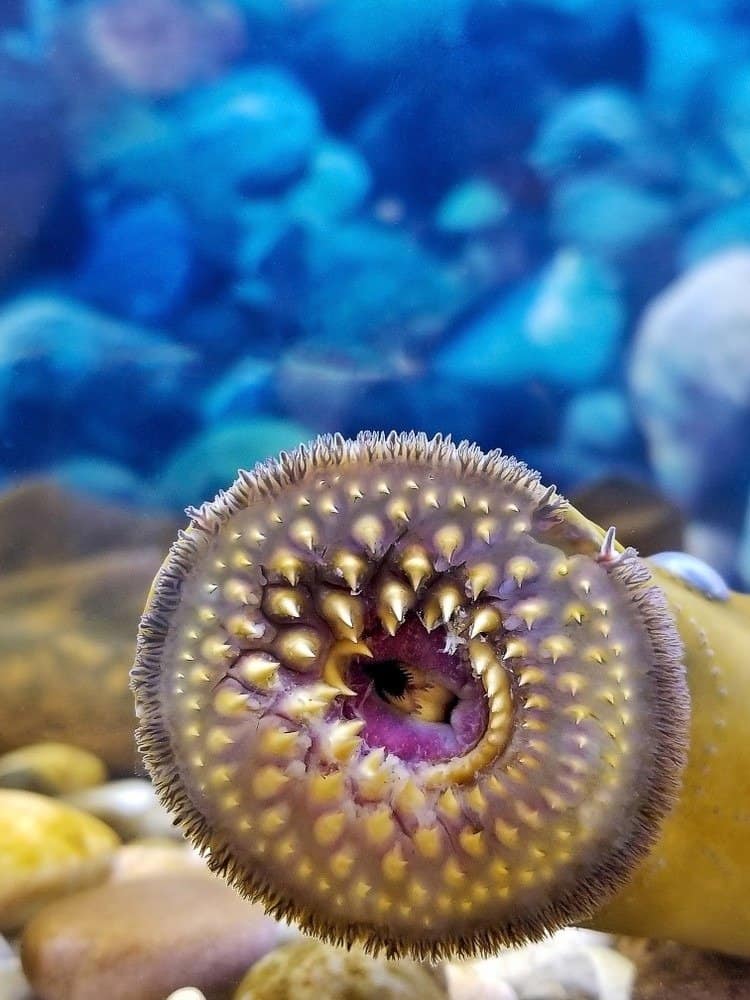
The sucking mouth of a sea lamprey is full of teeth.
©Maria Dryfhout/Shutterstock.com
Have you heard of the bloodsucking eel-like fish? Sea lampreys are parasitic creatures that cause harm to native fish and, occasionally, humans. These fish inhabit Lake Champlain and may have been there as early as the 1800s by traveling through the Hudson Canal. However, there is some debate about whether they may actually be native to the lake. Either way, sea lampreys have severe impacts on the fishery and ecosystem of Lake Champlain. One sea lamprey can kill at least 40 pounds of fish. This amount of damage leads to multi-million-dollar losses.
3. Northern Snakehead Fish
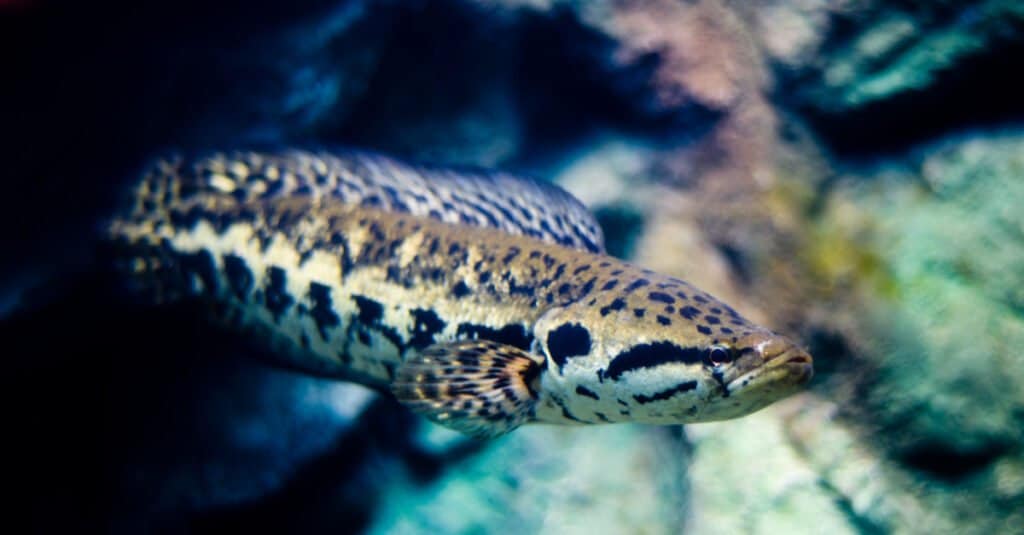
Northern snakeheads feed on native fish populations.
©Narongchut/Shutterstock.com
The northern snakehead is a predatory fish from Asia that often gets mistaken for the native bowfin. They grow up to three feet long and have a large mouth with many teeth. These fish were likely introduced to the state through intentional aquarium and fish market dumpings. They have been identified in at least two ponds in Queens. But have the potential to survive in canals, lakes, and rivers. They can spread to other water sources due to their ability to breathe air and survive outside of the water for several days. Northern snakeheads impact the environment by feeding on native fish populations and their food source.
4. Asian Long-Horned Beetle
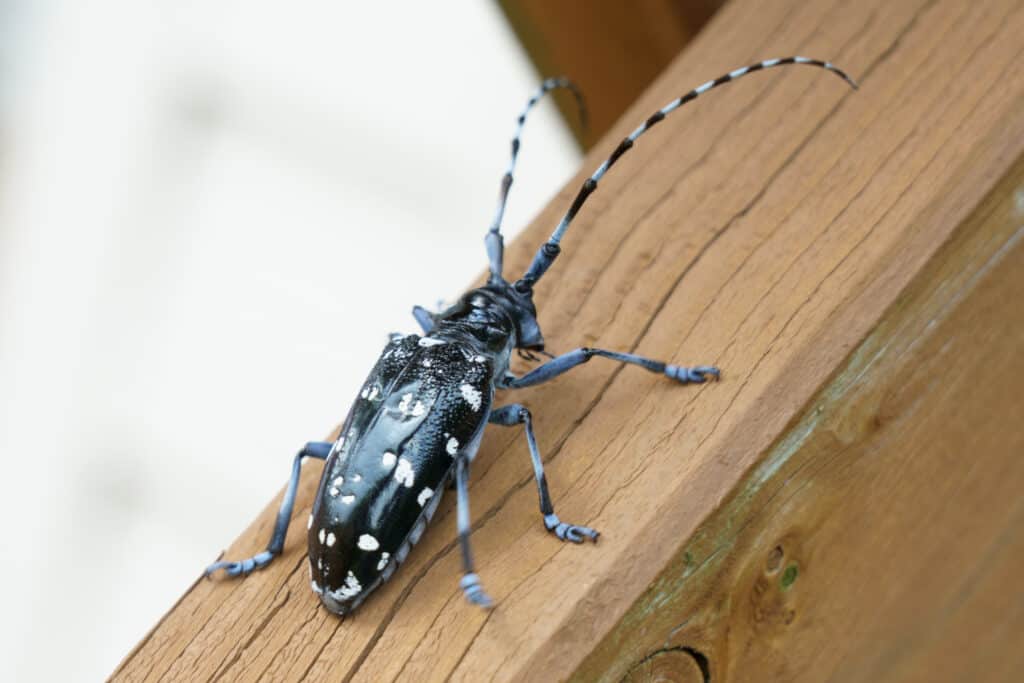
Asian long-horned beetles are highly destructive to trees are often classed as pests.
©High Mountain/Shutterstock.com
This wood-boring beetle is native to Korea and China. They can be distinguished by their black bodies, long antennae, and white spots. These insects likely traveled in wooden packing material and found their way to Norway maple trees in Brooklyn. They have also infested areas in Manhattan, Staten Island, Queens, and Long Island. Asian long-horned beetles can have devastating impacts on several industries, such as maple syrup, furniture, and flooring. The beetle larvae bore into a tree, eat the living tissues under the bark, and disrupt its water and nutrients, effectively killing it.
5. Emerald Ash Borer
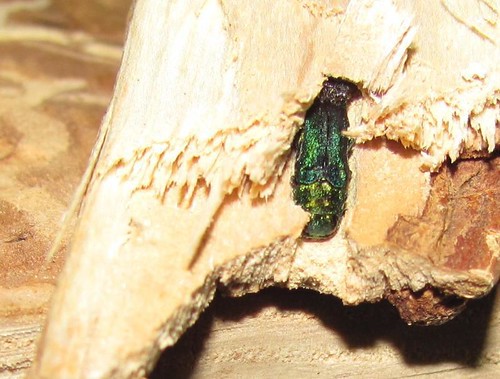
Emerald ash borer larvae bore into wood and leave tunnels.
© CC BY 2.0. – License
The emerald ash borer is another invasive beetle from Asia. But instead of maple, they kill American ash trees. These beetles are small but destructive, and they feature shiny green bodies with copper abdomens. They are currently present in almost all New York counties, where they threaten all of the state’s native ash trees. And they spread easily by infesting firewood and ash nursery stock. Currently, New York has regulations on the movement of firewood to protect the state’s forests.
6. Eurasian Boar

Eurasian boars are prolific in the United States.
©WildMedia/Shutterstock.com
Also known as wild boars, Eurasian boars are prolific across the United States. They are native to Europe and Asia and have features different from domestic pigs. Most Eurasian boars have long, narrow snouts, erect ears, straight tails, manes of hair, and prominent tusks. You may have seen these invasive species highlighted in the news, which is for good reasons. Feral swine cause millions of dollars in agricultural damage due to their rooting and trampling of crops. They can also be aggressive toward humans and spread diseases. While New York has eradicated most of their populations, they are working tirelessly to prevent reintroduction.
7. Hydrilla
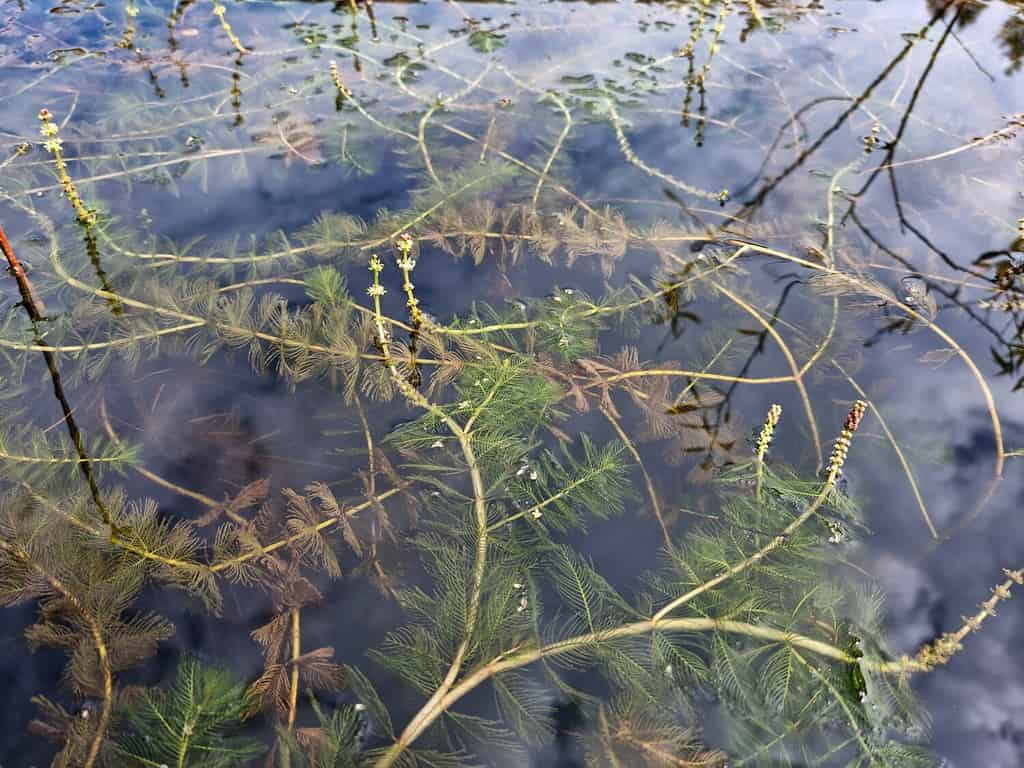
Hydrilla has a broad tolerance, allowing it to flourish in nearly any fresh or brackish water body.
©Binimin/Shutterstock.com
This aquatic plant is native to Asia and is one of the most difficult invasive plant species to eradicate. It is considered a noxious weed. And although it is a popular aquarium plant, hydrilla is currently prohibited from being sold in New York. These weeds severely impact lakes, rivers, and other wetlands. They grow profusely, producing thick mats of vegetation that can displace native plants and impact wildlife. It also disrupts water flow and decreases oxygen in the water, leading to smaller fish species. Since hydrilla grows in recreational lakes, it can also negatively affect activities like swimming, fishing, and boating.
8. Starry Stonewort

Starry stonewort is an invasive algae native to Europe and Asia.
©Lorenz Seebauer / CC BY-SA 4.0 – License
Native to Europe and Asia, the starry stonewort is an invasive algae with a more solid structure. This aquatic plant also produces star-shaped structures. It was forest introduced to the Great Lake from ballast water, eventually spreading to New York’s inland lakes. The plant is now confirmed in at least 14 counties. While research is still being done to understand the full impact of this invasive species, it has the potential to reduce fish spawning and phytoplankton. And it can outcompete other native plants that aquatic wildlife feeds on.
9. Water Chestnut
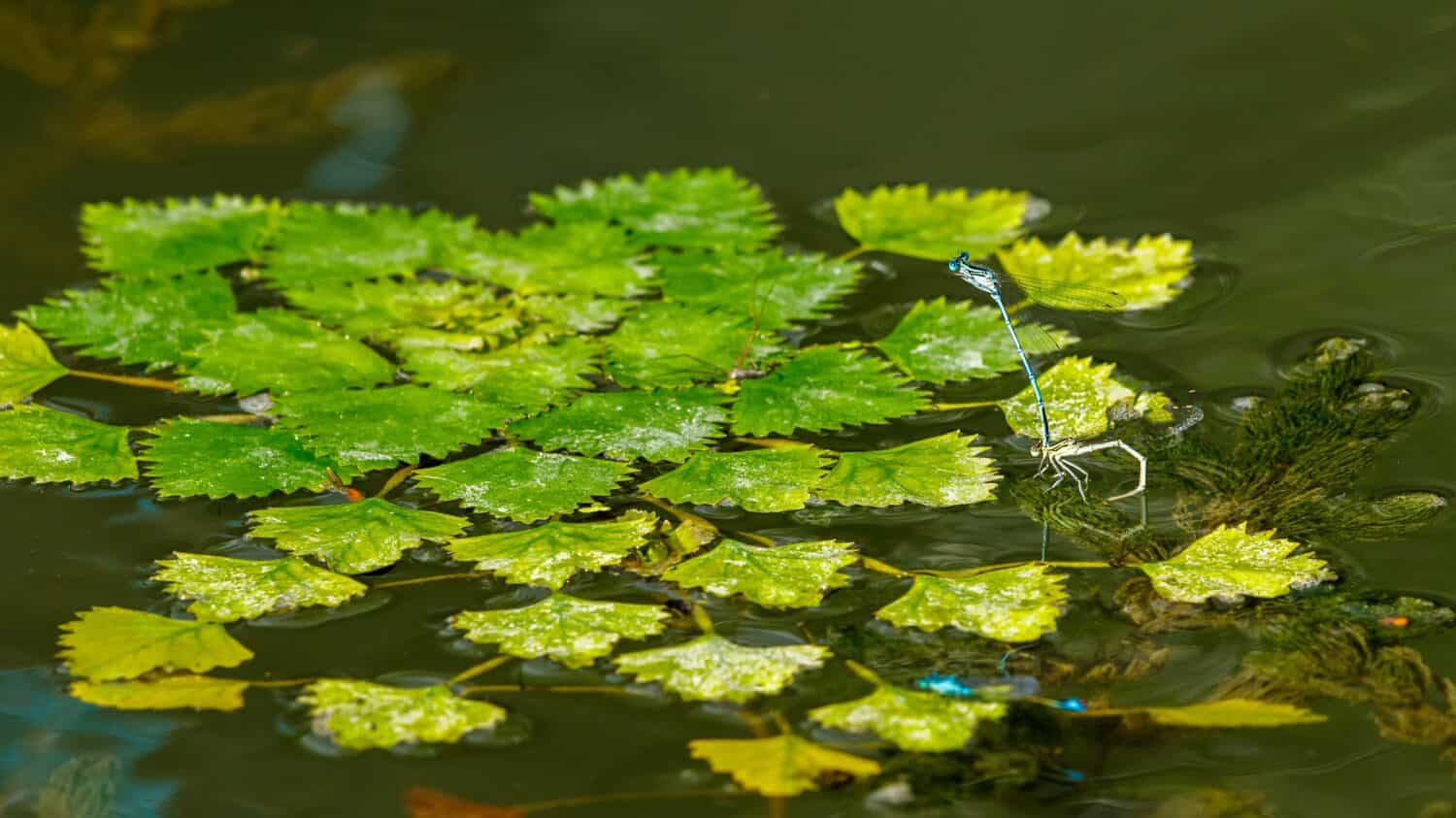
Water chestnuts produce nuts with sharp spines
©hecke61/Shutterstock.com
The water chestnut is another aquatic plant first introduced to the United States as an ornamental in the 1800s. It is originally from Europe and Asia but was found in New York in 1884. Today, this invasive plant inhabits over 40 counties in the state. It may be pretty to look at, but water chestnut forms dense mats of vegetation that can negatively impact streams, ponds, and lakes by choking out native plants and preventing wildlife from finding food. They also clog the water, making it difficult for recreation, like kayaking and canoeing. Plus, this plant produces hard nuts with long spines that can cause injury to those who step on them.
10. Giant Hogweed
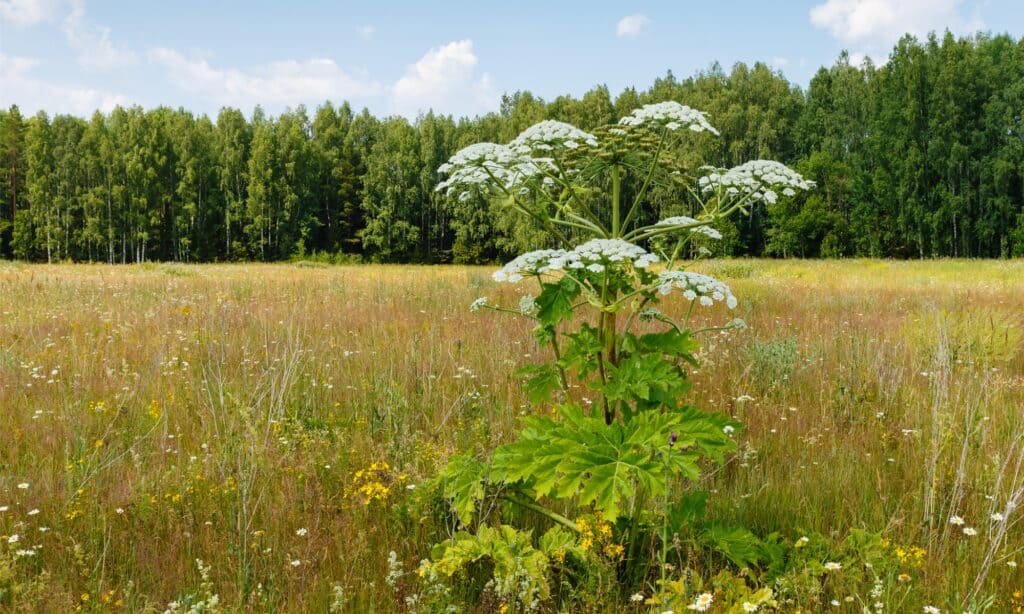
The invasive giant hogweed has spread to many locations.
©iStock.com/Mieszko9
Giant hogweed is an herb in the carrot family that can grow up to 14 feet tall, hence the name. It features purple-red blotches and produces white flowers that can look like many other species. However, you mustn’t touch this plant if you suspect it’s giant hogweed. It is a noxious weed that causes severe burns if you come into contact with its sap. If you suspect you have giant hogweed on your property, do not touch it. You should report and hire a professional to eradicate it.
11. Slender False Brome
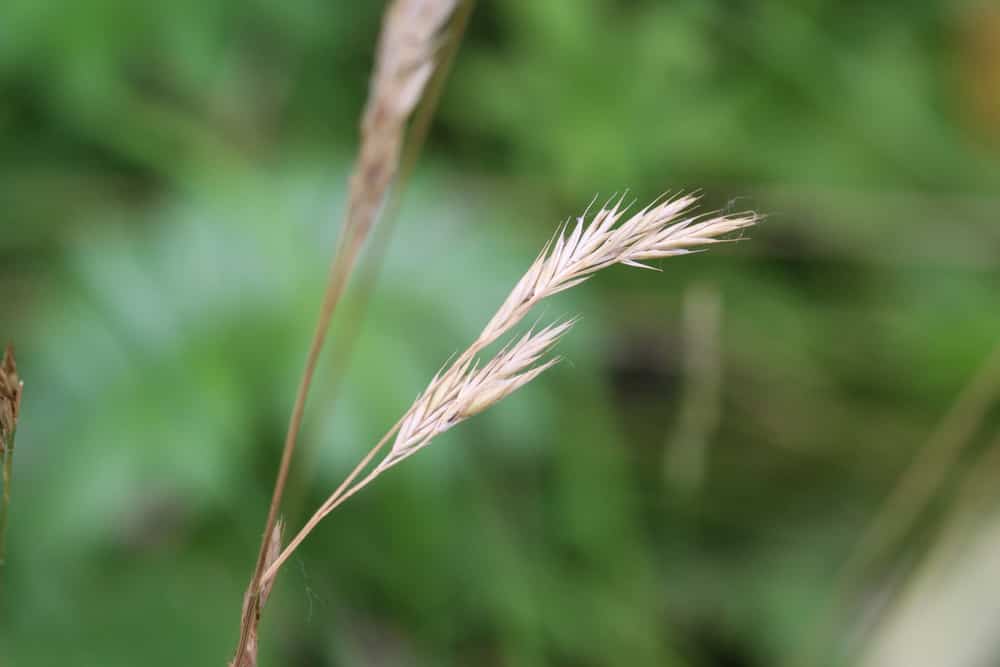
Slender false brome has been found in the Bergen Swamp, Ithaca, and Wappingers Falls.
©Mr. Meijer/Shutterstock.com
Slender false brome is a species of grass that is relatively unknown as an invasive plant. And it looks attractive, which prevents people from reporting it. The leaves are lime green, form bunches, and grow in a wide range of habitats. However, slender false brome can crowd out native plants, especially in shady areas. This grass can also prevent trees from establishing seedlings, which alters food sources for wildlife. This plant species has been found in the Bergen Swamp, Ithaca, and Wappingers Falls. It is likely in many more areas but goes undetected.
Invasive Species in New York: A Recap of the Top 11
| Plant and Animal Type | Invasive Species |
|---|---|
| Aquatic Animals | Chinese mitten crab, northern snakehead fish, sea lamprey |
| Terrestrial Animals | Asian longhorn beetle, emerald ash borer, Eurasian boar |
| Aquatic Plants | Hydrilla, starry stonewort, water chestnut |
| Terrestrial Plants | Giant hogweed, slender false brome |
The photo featured at the top of this post is © Herman Wong HM/Shutterstock.com
Thank you for reading! Have some feedback for us? Contact the AZ Animals editorial team.






